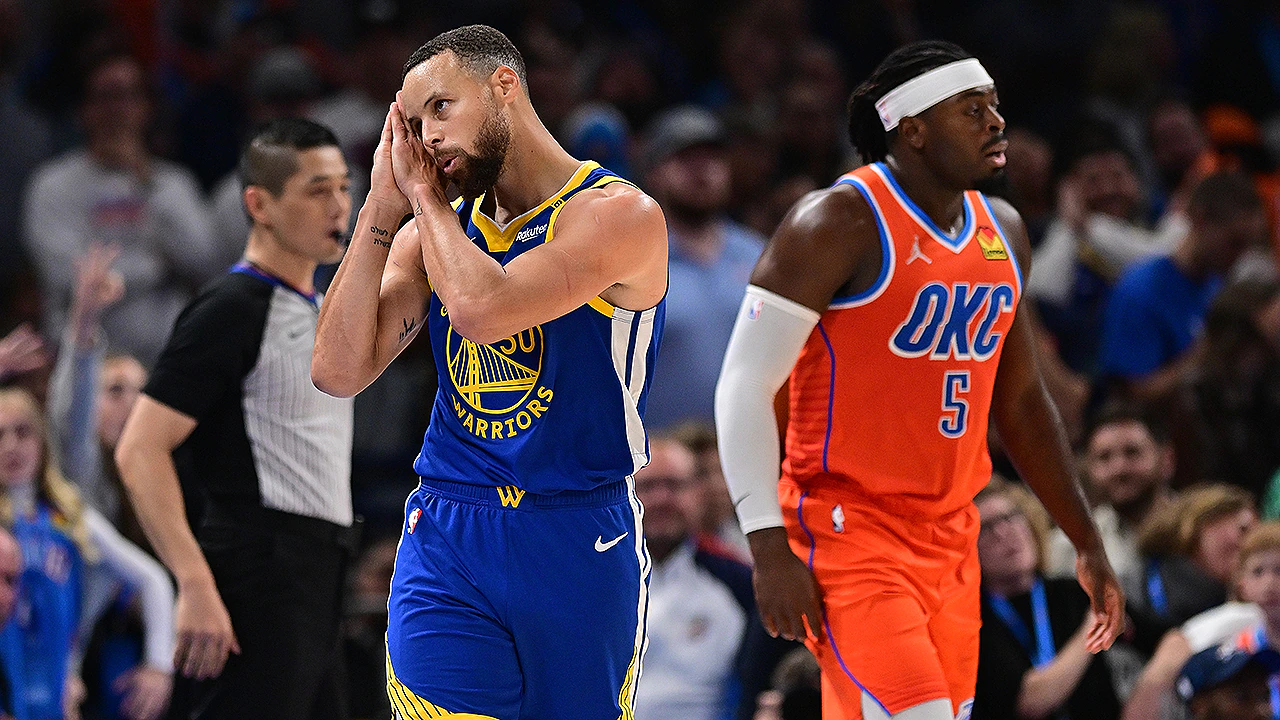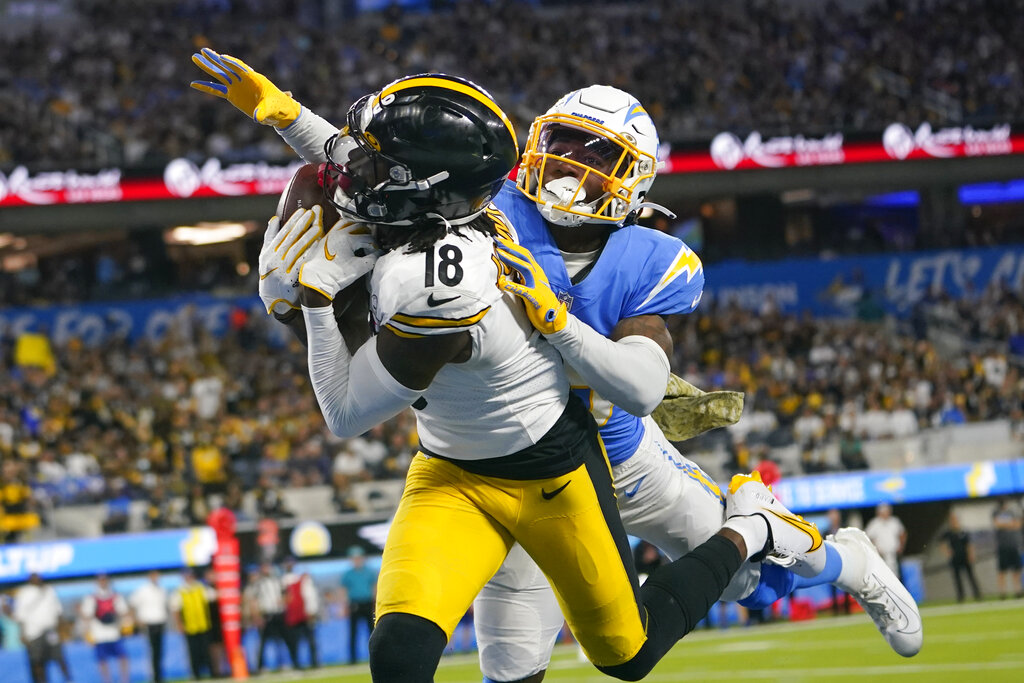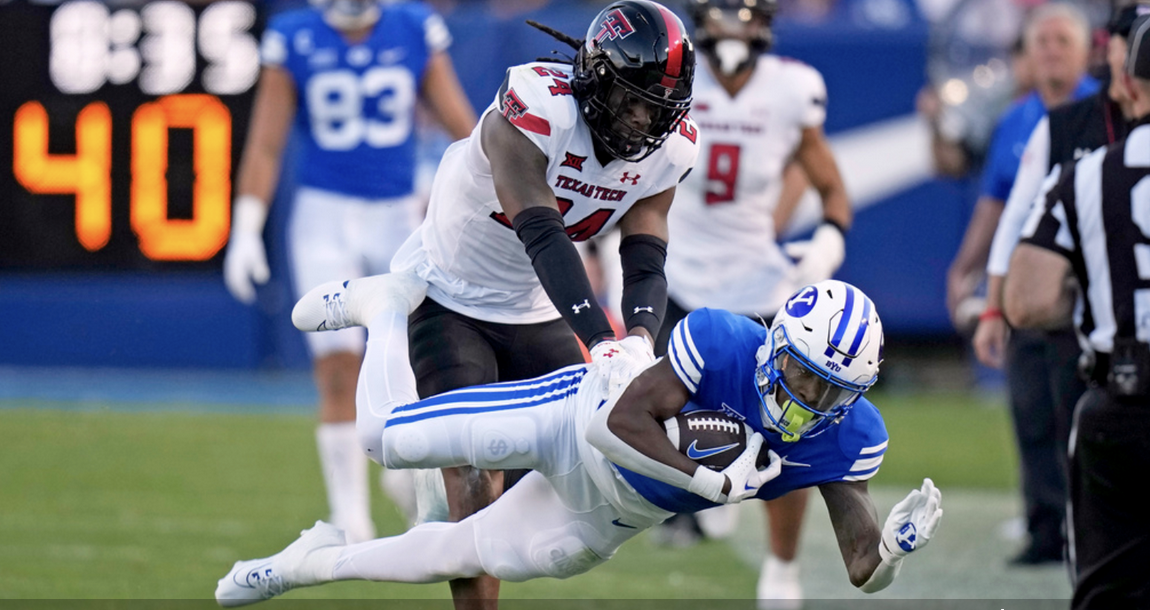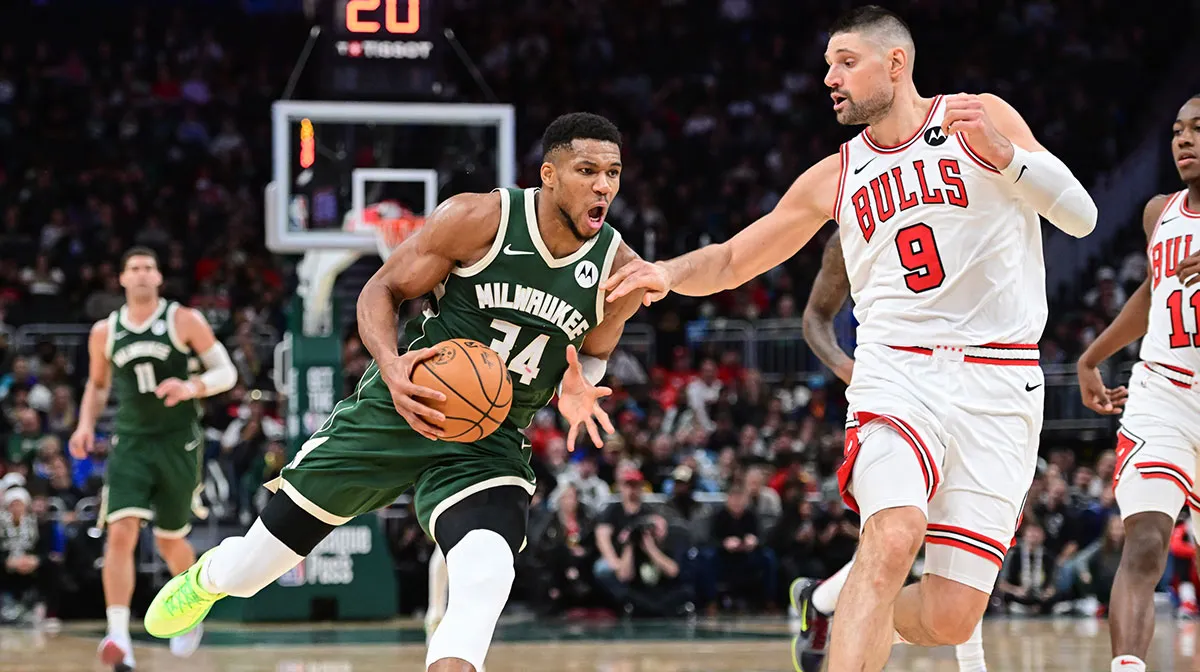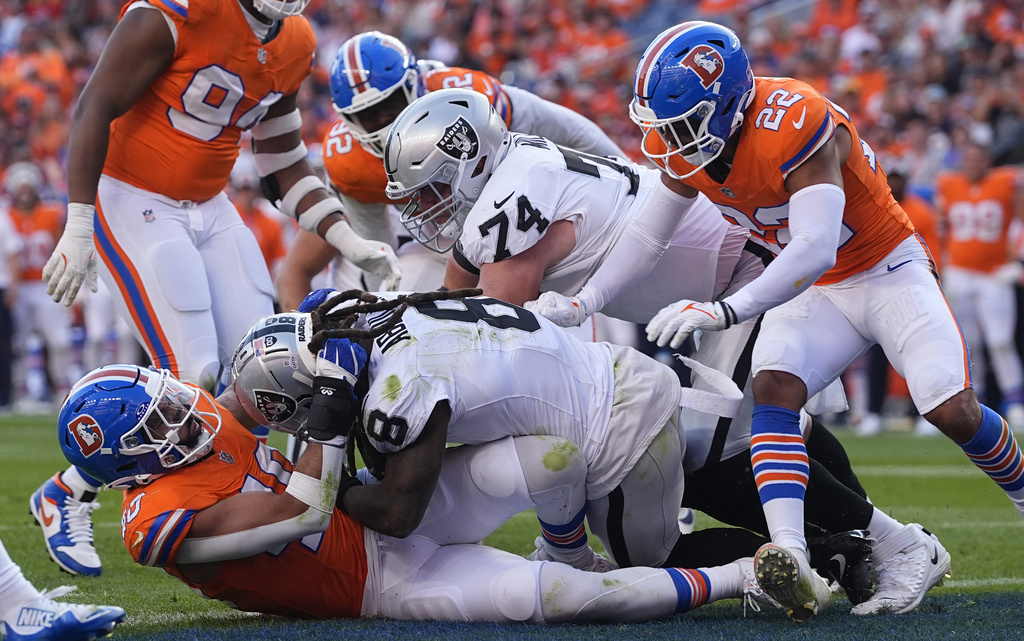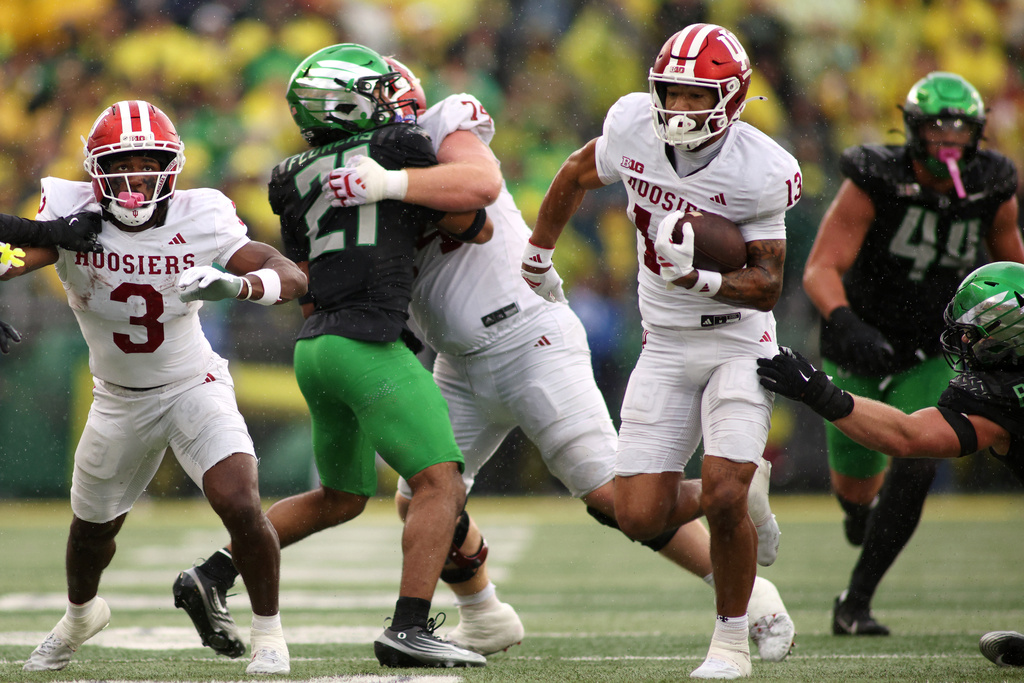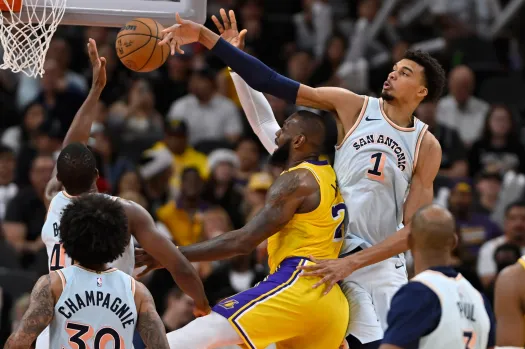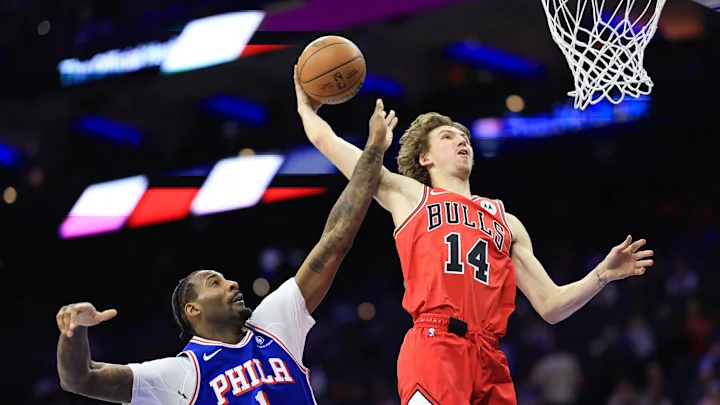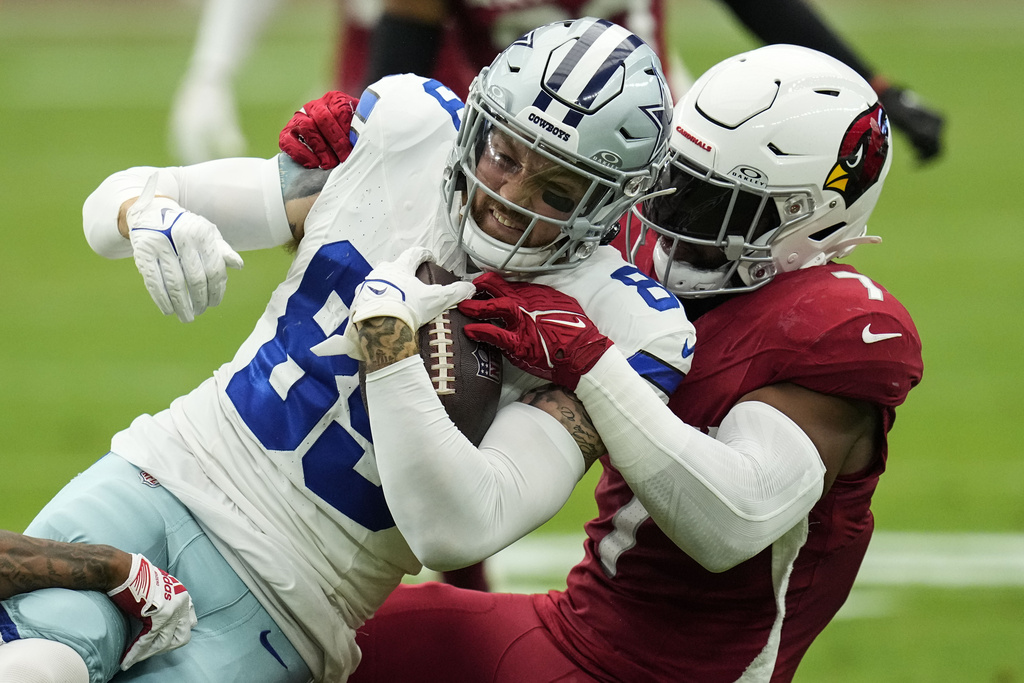Like clockwork, Ohio State remains at the top of this week’s Top 10. The Buckeyes defeated the James Franklin- and Drew Allar-less Penn State team, winning 38-14. No. 3 Texas A&M and No. 4 Alabama were both on byes this past weekend. Georgia narrowly escaped Florida 24-20 thanks to a key fourth-down stop in the fourth quarter. No. 7 Oregon also comes into Week 11 off a bye. Eight-ranked Ole Miss took care of business at home, defeating South Carolina 30-14.Week 10’s Georgia Tech was stunned by NC State 48-36, suffering its first loss of the season. Vanderbilt went down to the heart of Texas and was sent home with a 34-21 loss after being unable to complete the comeback and are no longer part of the elite. Lower-ranked teams are toppling the big dogs at a historic rate, proof that parity is no longer a trend but the new normal. That doesn't mean the College Football Playoff dreams are completely dead for teams like Vanderbilt, Georgia Tech and Miami, though we certainly understand the Yellow Jackets have a much stronger argument to stay afloat with only one loss. The final four weeks are setting up for a top-heavy Big Ten to secure a few spots and the SEC to potentially send the first three-loss team to the playoff. That's if Texas can split its upcoming games against top-five opponents. We're only speculating the hypotheticals, but now is the time to start mapping out the possibilities. We'll get our first official read on how the selection committee views the field Tuesday when the first CFP Rankings drop.
1. Ohio State Buckeyes (8-0)Week 11 Matchup: at Purdue BoilermakersOhio State keeps the top spot, but just barely, as Indiana continues to dominate. Ohio State started slow against Penn State. It was a 17-14 lead at the end of the first half. Ohio State was amazing from there. They won the game 38-14 as Julian Sayin had his Heisman moment. Sayin is the new Heisman Trophy favorite after posting a 91.7 PFF passing grade in the win with four touchdowns and only three incompletions. It should be smooth sailing for the Buckeyes until they face Michigan in the last week of the season.2. Indiana Hoosiers (9-0)Week 11 Matchup: at Penn State Nittany LionsIndiana has a claim to be the No. 1 team in the nation. They have been nothing short of perfect this year. Indiana moved to 9-0 with a 55-10 win over Maryland. Fernando Mendoza threw a pick on the first drive, and then the Hooisers punted on their second drive, but from there, they took off. Indiana scored on every single drive from there on out, plus returned a fumble for a touchdown. Indiana looks to become 10-0 for the second straight season and second time ever this week at Penn State.3. Texas A&M Aggies (8-0)Week 11 Matchup: at No. 21 Missouri TigersThere are just four undefeated teams left in FBS, and the third of them is Texas A&M. The Aggies were off in Week 10, and now will look to keep their undefeated season going on the road. They face Missouri in Week 11 on the road. The Aggies are in a solid spot to go undefeated. After Missouri, they face South Carolina and Samford at home before a road trip to Texas.4. Alabama Crimson Tide (7-1)Week 11 Matchup: vs. LSU TigersAlabama was also off in Week 10, after surviving South Carolina. The team is now 7-1 on the year, with the only loss being the first week of the year to Florida State. Since then, the team has been amazing, winning seven straight and also defeating four straight ranked opponents. The Tide will take on an LSU team in Week 11 that’ll be coached by Frank Wilson for the first time following Brian Kelly’s firing. Should we expect anything to change for the Tigers?5. Georgia Bulldogs (7-1)Week 11 Matchup: at Mississippi State BulldogsGeorgia survived archrival Florida in the World’s Largest Outdoor Cocktail Party, winning 24-20. The Bulldogs are 7-1 on the year after jumping on the struggle bus this week. Georgia needed a comeback to defeat Florida, as they won the game 24-20. The game was tied at 10 at the end of the first half, and then tied at 17 at the end of the third quarter. The Bulldogs’ pass defense dominated in the victory, permitting just 166 yards through the air and -0.278 EPA per pass. 6. BYU Cougars (8-0)Week 11 Matchup: at No. 10 Texas Tech Red RaidersBYU is the last of the undefeated teams left in FBS College Football. BYU was off this past weekend and will take on Texas Tech in the biggest game of Week 11. In the game prior to their bye week, they outlasted Iowa State to take the 41-27 victory. This Saturday, we get to see how good they are with this road game in a hostile environment.7. Oregon Ducks (7-1)Week 11 Matchup: at Iowa HawkeyesOregon was off last weekend and takes on a 6-2 Iowa team in Week 11. Oregon is still sticking around as one of the top teams in the nation. The 7-1 Ducks are coming off an open week, and are still one of the top teams in the Big 10. Still, with Indiana and Ohio State undefeated, they need help to make the Big Ten title game after their 30-20 loss to Indiana. Oregon hits the road to face Iowa, before games with Minnesota, USC, and Washington to end the year.8. Ole Miss Rebels (8-1)Week 11 Matchup: vs. The Citadel BulldogsOle Miss took down South Carolina last weekend. With quarterback Trinidad Chambliss struggling, running back Kewan Lacy stepped up to carry the offense with 167 rushing yards and 129 yards after contact. Regardless, they have been great since the loss to Georgia. They took the win over Oklahoma, 34-26, and then took care of business agaisnt South Carolina. The Rebels held a 17-7 lead over the Gamecocks at the end of the first half. They would go on to win the game 30-14. Ole Miss faces The Citadel in Week 11, before games with Florida and Mississippi State to end the season.9. Texas Tech Red Raiders (8-1)Week 11 Matchup: vs. No. 6 BYU CougarsTexas Tech moves into the top 10 after a 43-20 win over Kansas State. Texas Tech has rebounded from its lone loss of the year. After falling 26-22 to Arizona State, they have now won two straight. This past week, it was a dominating performance on the road. Texas Tech welcomed back Behern Morton in the game, and he was solid. He went 21 for 32 for 249 yards and two scores. He did throw an interception in the game. Still, Texas Tech took the victory over Kansas State. Linebacker Jacob Rodriguez continues to look like the favorite for the Butkus Award after earning a 91.7 PFF grade and tallying two forced fumbles. The Red Raiders host ESPN’s College GameDay this week as they take on another top-10 team in BYU.10. Notre Dame (6-2)Week 11 Matchup: vs Navy Notre Dame moves up after their sixth straight win of the year. It was either the Irish or a 7-1 Texas team off their Vandy win. This past week, Notre Dame hit the road to face Boston College. The Eagles did make the game close in the third quarter. After Boston College hit a field goal late in the third, it was a 12-10 Notre Dame lead. Still, the Fighting Irish went on a 75-yard drive, capped with a Jeremiyah Love touchdown to make it 18-10. They added a fourth-quarter score on a 94-yard touchdown from Love to win the game 25-10. The Irish host Navy in Week 11, before a road trip to Pitt.
Read more
